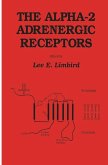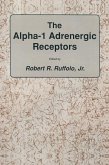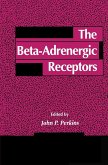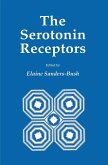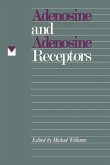Section 1: Historical Perspective.- 1 alpha-2 Adrenergic Receptors: A Historical Perspective.- Perspective.- References.- Section 2: Characterization of the Receptor and its Binding Site.- 2 Biochemistry of alpha-2 Adrenergic Receptors.- 1. Radiolabeled Ligands for the Reversible Labeling of alpha-2 Adrenergic Receptors.- 1.1. [3H]UK 14,304.- 1.2. [3H]Yohimbine/[3H]Rauwolscine.- 1.3. 125I-Rauwolscine-pAPC.- 1.4. [3H]Idazoxan.- 2. Radiolabeled Ligands for the Irreversible Labeling of alpha-2 Adrenergic Receptors.- 2.1. [3H]Phenoxybenzamine.- 2.2. [3H]p-Azidoclonidine.- 2.3. [3H]SKF 102229.- 2.4. 125I-Rauwolscine-AzPC.- 3. Biochemical Isolation of alpha-2 Adrenergic.- Receptors.- 3.1. Solubilization of alpha-2 Adrenergic Receptors from Membranes.- 3.2. Approaches to the Purification of alpha-2 Adrenergic Receptors.- 4. Structural Aspects of the alpha-2 Adrenergic Receptors.- 5. Conclusions.- References.- Section 3: Biochemical Mechanisms of Receptor Action.- 3 Mechanisms for Inhibition of Adenylate Cyclase by alpha-2 Adrenergic Receptors.- 1. Introduction.- 2. Components and Mechanisms Involved in Stimulation of Adenylate Cyclase.- 3. Components Involved in Inhibition of Adenylate Cyclase by alpha-2 Adrenergic Agonists.- 3.1. A Guanine Nucleotide-Binding Protein Is Involved in Inhibition of Adenylate Cyclase by alpha-2 Adrenergic Agonists.- 3.2. Identification of the Inhibitory Guanine Nucleotide-Binding Protein Gi by Pertussis Toxin.- 3.3. Purification of Gi and Characterization of the Purified Protein.- 3.4. Analogous G-Proteins.- 4. Mechanisms Involved in Inhibition of Adenylate Cyclase in the Plasma Membrane.- 4.1. Inhibition of Adenylate Cyclase by ?/? Complexes Mimics Hormonal Inhibition of the Enzyme.- 4.2. Release of ?/? Complexes by Activated Gi Cannot Be the Sole Mechanism Responsible for Inhibition of Adenylate Cyclase.- 5. Modulation of GiMediated Adenylate Cyclase Inhibition.- 5.1. Modulation by GTP and Stable GTP Analogs.- 5.2. Modulation by Sodium Ions.- 5.3. Divalent Cations Regulate Adenylate Cyclase at Several Sites.- 5.4. Inhibitory Coupling of alpha-2 Adrenergic Receptors Is Highly Susceptible to Alkylation by N-Ethylmaleimide.- 5.5. alpha-2 Adrenergic Inhibition of Adenylate Cyclase Can Be Specifically Blocked by Limited Proteolysis.- 5.6. Protein Kinase C Interferes with alpha-2 Adrenergic Inhibition of Adenylate Cyclase in Human Platelet Membranes.- 6. Conclusion.- References.- Section 4: Correlation of Receptor Binding and Function.- 4 Structure¿Activity Relationships for alpha-2 Adrenergic Receptor Agonists and Antagonists.- 1. Introduction.- 2. alpha-Adrenergic Receptor Subclassification.- 2.1. Methods of Subclassification.- 2.2. alpha-2 Adrenergic Receptor Heterogeneity.- 2.3. Postsynaptic vs Presynaptic alpha-2 Adrenergic Receptors.- 3. Structure¿Activity Relationships of alpha-2 Adrenergic Receptors.- 3.1. Stereochemical Requirements of alpha-2 Adrenergic Receptors.- 3.2. Structure¿Activity Relationships of the alpha-2 Adrenergic Receptor for the Phenethylamines.- 3.3. Structure¿Activity Relationships of the alpha-2 Adrenergic Receptor for the Imidazolines.- 3.4. Structure¿Activity Relationships of the alpha-2 Adrenergic Receptor for Antagonists.- 3.5. Model of the alpha-2 Adrenergic Receptor Based on the Structural Requirements for alpha-2 Adrenergic Receptor Antagonists.- 4. Summary and Conclusions.- References.- 5 Functions Mediated by alpha-2 Adrenergic Receptors.- 1. Introduction.- 2. alpha-2 Adrenergic Receptors in the Cardiovascular System.- 2.1. Cardiovascular Effects Mediated by Central alpha-2 Adrenergic Receptors.- 2.2. Peripheral Arterial alpha-2 Adrenergic Receptors.- 2.3. Peripheral Venous Circulation.- 2.4. Myocardium.- 2.5. alpha-2 Adrenergic Receptors in the Kidney.- 3. Functions Mediated by alpha-2 Adrenergic Receptors in Various Noncardiovascular Tissues.- 3.1. Inhibition of Neurotransmitter Release.- 3.2. Functional Role of Platelet alpha-2 Adrenergic Receptors.- 3.3. Sedation Mediated by alpha-2 Adrenergic Receptors.- 3.4. Interaction of alpha-2 Adrenergic Receptors and Opiate Receptors in the Central Nervous System.- 3.5. Suppression of Insulin Release by alpha-2 Adrenergic Receptors.- 3.6. alpha-2 Adrenergic Receptors in the Gastrointestinal Tract.- 3.7. alpha-2 Adrenergic Receptors in Uterus.- 4. Correlation Between alpha-2 Adrenergic Receptor Occupancy (Binding) and Function.- 4.1. Occupancy¿Response Relationships.- 4.2. Second Messengers.- 5. Comparison of Drug Potencies in Biochemical and Physiologic Assay Systems for alpha-2 Adrenergic Receptors.- 6. Summary and Conclusions.- References.- Section 5: Receptor Regulation.- 6 Regulation of alpha-2 Adrenergic Receptors.- 1. Introduction.- 2. Physiologic Regulation of alpha-2 Adrenergic Receptors.- 2.1. Developmental Changes in alpha-2 Adrenergic Receptors.- 2.2. alpha-2 Adrenergic Receptors in States of Altered Nutritional Status.- 2.3. Changes in alpha-2 Adrenergic Receptors with Exercise.- 2.4. alpha-2 Adrenergic Receptors in the Menstrual (Estrus) Cycle and Pregnancy.- 3. Pharmacologic Regulation of alpha-2 Adrenergic Receptors.- 3.1. Homologous Regulation of alpha-2 Adrenergic Receptors.- 3.2. Heterologous Regulation of alpha-2 Adrenergic Receptors.- 4. Disease-Related Changes in alpha-2 Adrenergic Receptors.- 4.1. Cardiovascular Diseases.- 4.2. Platelet Disorders.- 4.3. Psychiatric Disorders.- 4.4. Miscellaneous Diseases.- 5. Summary and Conclusions.- References.- Section 6: Future Vistas.- 7 What Happens Next? A Hypothesis Linking the Biochemical and Electrophysiological Sequelae of alpha-2 Adrenergic Receptor Occupancy with the Diverse Receptor-Mediated Physiological Effects.- 1. Introduction.- 2. Biochemical Consequences of alpha-2 Adrenergic Receptor Occupancy in Addition to the Inhibition of Adenylate (Cyclase.- 2.1. alpha-2 Adrenergic Receptors and Na+/H+ Exchange.- 2.2. alpha-2 Adrenergic Receptors and Ca2+.- 3. Electrophysiological Consequences of alpha-2 Adrenergic Receptor Occupancy.- 3.1. alpha-2 Adrenergic Receptors and K+ Conductance.- 3.2. alpha-2 Adrenergic Receptors and Ca2+ Conductance.- 3.3. GTP-Binding Proteins Are Involved in alpha-2 Adrenergic Receptor-Mediated Modulation of Ion Channels.- 4. Hypothesis: Na+/H+ Exchange, Changes in Ca2+ Availability and Ion Channel Conductances Interact to Elicit alpha-2 Adrenergic Receptor-Mediated Physiological Effects.- 5. Summary and Future Perspectives.- References.


